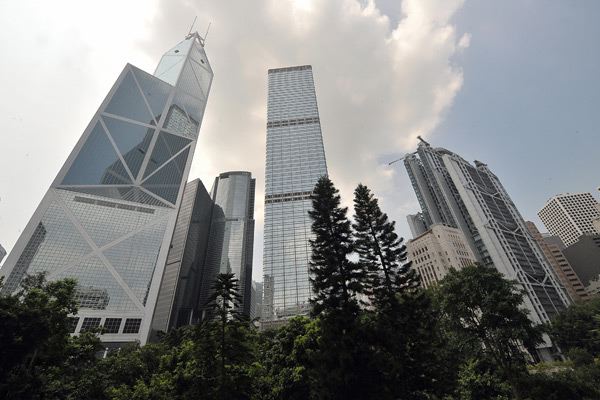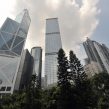
Chinese SOEs a Target of Hu-Wen’s “Inclusive Growth”?
Publication: China Brief Volume: 11 Issue: 1

Promoting social equality and justice has been the single most oft-stated commitment that the Chinese leadership has made to its people the past year. In an interview with China National Radio late last month, Premier Wen Jiabao vowed to "render society more fair and just." This echoed his now-famous statement at the National People’s Congress last March, that "equality and justice should shine more brightly than the sun." A leitmotif of the 12th Five-Year Plan (2011 to 2015) is "inclusive growth," meaning all citizens should be able to equitably share in China’s spectacular economic development (Xinhua News Agency, March 14, 2010; People’s Daily, December 26, 2010; China News Service, December 5, 2010). Yet nothing militates against the ideals of equality and justice more than the special privileges—and humongous profits—enjoyed by the nation’s 129 centrally controlled state-owned enterprises (SOEs). There are signs that in their last 20 months in office, the Hu Jintao-Wen Jiabao administration is determined to, in Chinese parlance, return the nation’s wealth—including that of the giant SOEs—to the people. Yet the chances are high that given the SOEs’ extraordinary economic and political clout and sterling ties to the Chinese Communist Party (CCP) leadership, these symbols of state capitalism will pull out all the stops to safeguard their interests.
Thirty-three years after the beginning of the reform and open-door era, the party-and-state apparatus still has a stranglehold over the economy. The 129 central-level SOEs, which are also called yangqi, enjoy monopolistic status in areas including oil and gas; minerals and power generation; banking and insurance; telecommunications and transportation; as well as aerospace and defense. While many of the 129 so-called "aircraft carrier" conglomerates are listed on the Chinese—and in some cases also the Hong Kong and New York—stock markets, the central government holds at least half of their shares (Xinhua News Agency, August 1, 2010; Global Times, October 19, 2010).
Theoretically the yangqi are under the strict control of the ministerial-level State Assets Supervision and Administration Commission (SASAC). Members of the board of directors as well as senior managers of these SOEs are appointed by SASAC in consultation with the CCP’s Department of Organization. In practice, many of these behemoths seem a law unto themselves. The "state-within-a-state" status of yangqi is due to several factors. In 2009, their combined assets of 21 trillion yuan ($3.17 trillion) account for 61.7 percent of the country’s GDP. In 2009, they contributed 1.15 trillion yuan ($173.45 billion) of taxes, or more than 17 percent of total intake of central coffers (Reuters, September 6, 2010; China News Service, August 13, 2010). Equally significant is the fact that the majority of CEOs and top managers of the yangqi are senior party cadres some of whom sit on the CCP Central Committee as ordinary or alternate members. Moreover, a disproportionately large number of "princelings"—a reference to the offspring of party elders—are honchos of these gigantic state firms. For example, Vice-Governor of Shanxi Province Li Xiaopeng, who is the son of former premier Li Peng, used to head the China Huaneng Group, an energy conglomerate. Li’s sister Li Xiaolin, dubbed China’s "power queen," is Chairwoman of China Power International (Sydney Morning Herald, October 2, 2010; Financial Times, March 29, 2010).
The yangqi’s predominance is cutting against the grain of the public’s perception of socio-economic equality and justice. First of all, their earnings are seen as obscenely large. The 129 central SOEs made an estimated 1 trillion yuan ($150.83 billion) of net profits in 2010, or 50 percent more than that of 2009. In the first half of last year, the four state-held commercial banks alone raked in an average of 1.4 billion yuan ($211.16 million) a day (China News Service, August 30, 2010; People’s Daily, December 29, 2010). While these behemoths do pay voluminous taxes, they are not seen as having made substantial contributions to the well-being of ordinary Chinese. Even the official media has called upon the yangqi to share their wealth with the masses. In an unusual commentary, the People’s Daily pointed out that "people are paying more attention to how are the profits [of SOEs] are being distributed and used." "When can the entire people enjoy the profits reaped by the state-held enterprises?" asked the CCP’s mouthpiece. Added the China Youth Daily: "With profits of over 1 trillion yuan, yangqi should return their earnings to the people on a larger scale" Moreover, while SASAC has in recent years laid down ceilings for the remuneration of top yangqi executives, the average salary of SOE employees is at least five times that of staff in the non-state sector (Stockstar.com, August 8, 2010; Sina.com, December 17, 2010; Ifeng.com, December 20, 2010; China Youth Daily, January 4).
Partly in response to public outcry, the State Council on December 28 asked most central-level SOEs to pay larger amounts of dividends to the government. From 2011, the most profitable SOEs, including those in the oil and gas, tobacco, telecommunications and energy sectors, will have to surrender 15 percent of their post-tax profits to central coffers, up from the existing 10 percent. Furthermore, yangqi in fields such as trade, construction, transport, mining and steel will be obliged to dole out 10 percent of post-tax profits to the government, up from the current 5 percent. Much of the added revenues will supposedly be used to pay for expanded public services including social welfare (People’s Daily, December 31, 2010; Financial Times, December 30, 2010; Wall Street Journal, December 29, 2010). The small margins of these upward adjustments, however, are unlikely to make a dent in the SOEs’ lopsided share of the economic pie.
The official excuse for granting yangqi special dispensations is that these so-called national champions will one day develop into multinationals that will spearhead the advancement of the entire economy. It is true that 54 central-level SOEs, such as the three oil-and-gas monopolies and the four state-held commercial banks, made the Fortune 500 list in 2010, up from 43 a year ago (Xinhua News Agency, July 9, 2010; People’s Daily, July 10, 2010). Yet while these Chinese giants have overtaken globally known multinationals in size, they have demonstrated neither efficiency nor innovativeness. As SASAC Vice-Chairman Huang Shuhe admitted in December, "the question of a number of yangqi being big but not strong has not been resolved." "Their ability to create value still lags behind world-class enterprises by a large margin," he pointed out (China News Service, December 29, 2010; Sina.com, December 30, 2010).
Instead of setting new standards in innovation and productivity, many state-held conglomerates have taken advantage of their huge war chests to make a killing in the red-hot real-estate market. A key reason behind China’s feverish property sector is that companies including yangqi are hoarding land and engaging in blatant speculation. To combat irrational exuberance in real estate, Beijing last March ordered 78 central-level SOEs to quit the property sector. So far, only nine have done so. Just last month, the CITIC Group doled out 6.3 billion yuan ($950.23 million) for a prime Beijing site. It was the largest single land transition in the capital for 2010. That increasing members of the middle and professional classes, not to mention white-collar and migrant workers, can no longer afford sky-high apartment prices has exacerbated the masses’ sense of social inequality (Huanqiu.com, July 28, 2010; Nanfang Daily, July 27, 2010; Ming Pao [Hong Kong] December 23, 2010).
Equally significant is the fact that Beijing has no plans to open up numerous lucrative sectors that are monopolized by yangqi to the private sector, which is the country’s largest provider of employment. According to Nanjing University social scientist Shen Kunrong, a major reason behind the inequitable distribution of national income is "the existence of monopoly and unequal competition" as manifested by the SOEs’ privileged status. For famed economist Li Yining, "equal competition should be the basis for considering the question of whether SOEs or private firms should advance or retreat." The Peking University professor pointed out that non-state companies still suffer from discrimination in securing bank loans or in applying for public offerings in China’s two stock markets (Xinhua News Agency, July 21, 2010; People’s Daily, September 6, 2010). The sorry state of the non-state sector is illustrated by a simple statistic. In 2009, the combined earnings of just two yangqi, China Mobile and China National Petroleum Corp—218.55 billion yuan ($32.96 billion)—exceeded by 600 million yuan ($90.5 million) the total profits of China’s 500 most viable private companies (Huanqiu.com, August 30, 2010; Guangzhou Daily, August 22, 2010).
For reasons including rendering itself less susceptible to anti-dumping lawsuits, Beijing has the past few years, been lobbying both the United States and the European Union to grant the country "full market economy status." This issue will likely figure in discussions that President Hu will hold with American officials during his much-anticipated state visit to Washington later this month. The fact of the matter remains, however, that the role of key SOEs is set to grow for the rest of the 2010s. Since the global financial crisis, the Chinese economy has been dominated by the trend of guojin mintui, or SOEs making headway while private firms are beating a retreat. From 2005 to 2009, the assets of SOEs nationwide shot up from 25.4 trillion yuan ($3.83 trillion) to 53.5 trillion yuan ($8.07 trilllion), while their aggregate sales rose from 14.2 trillion yuan ($2.14 trillion) to 24.2 trillion yuan ($3.65 trillion). SASAC minister Wang Yong noted that the 12th FYP period would be "a seminal stage for the reform and development of state firms." "SOEs will continue to play a major guiding role in the national economy," he indicated (Caing.com, January 7; Finance.qq.com, January 7). SASAC and other party-and-state departments have grandiose plans for nurturing at least 50 yangqi into globally competitive multinationals by the early 2020s. There are also worries among party leaders that eroding the basis of Chinese-style state capitalism could jeopardize the CCP’s hold on political power. As Minister Wang pointed out, SOEs were not only "an important pillar of the national economy" but also "an important foundation of the CCP’s ruling party [status]" (New York Times, August 29, 2010; Xinhua News Agency, September 4, 2010; Ming Pao, December 25, 2010; SASAC.gov.cn, August 27, 2010). In spite of the populist language of the 12th FYP, for the party leadership, there seems little question that the perpetuation of the CCP’s perennial ruling-party status is much more important than abstract concepts such as equality and justice.





